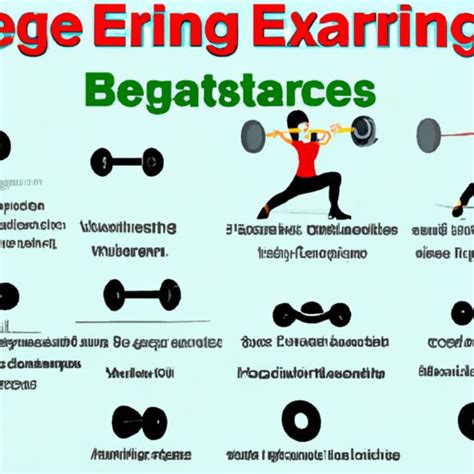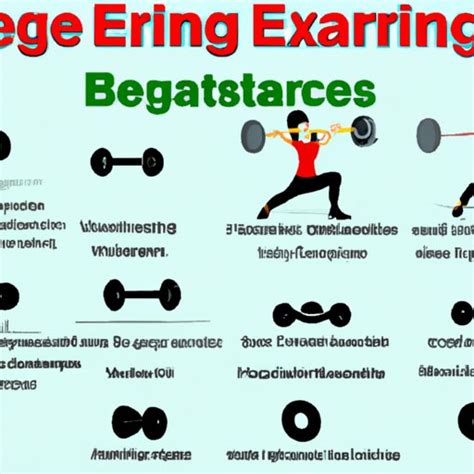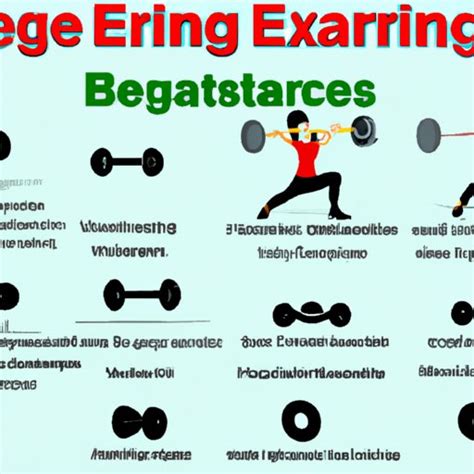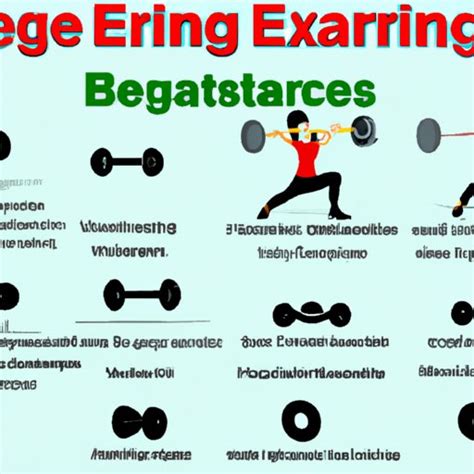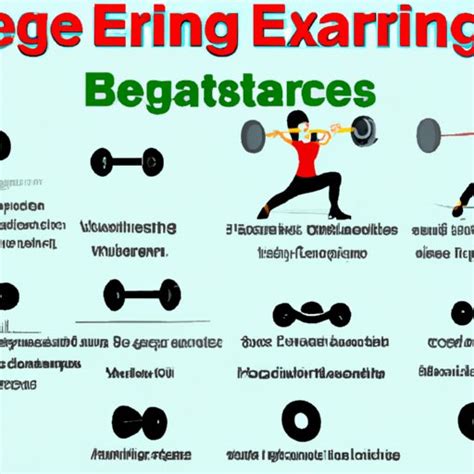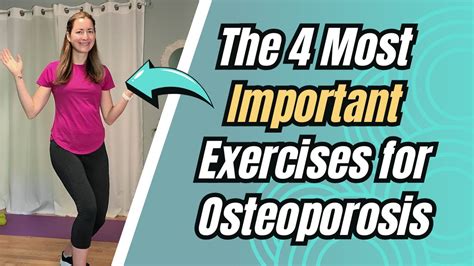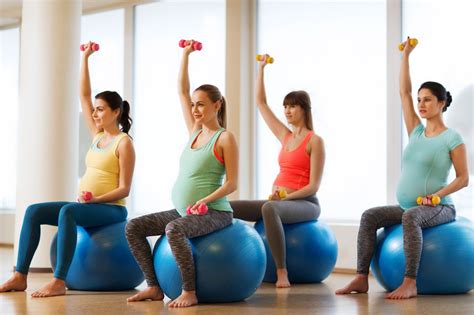Intro
Weight-bearing exercise is a crucial component of a healthy lifestyle, playing a significant role in maintaining strong bones, preventing injuries, and promoting overall physical well-being. As we age, our bones naturally lose density, making them more susceptible to fractures and osteoporosis. Engaging in regular weight-bearing activities can help mitigate this process, ensuring that our skeletal system remains robust and resilient. Moreover, weight-bearing exercises have been shown to improve balance, coordination, and overall physical function, reducing the risk of falls and related injuries. With the numerous benefits that weight-bearing exercises offer, it is essential to incorporate them into our daily routine, making them an integral part of our fitness regimen.
The importance of weight-bearing exercise cannot be overstated, particularly for individuals with a family history of osteoporosis or those who have been diagnosed with the condition. By subjected our bones to stress and impact, weight-bearing exercises stimulate the growth of new bone tissue, increasing bone density and reducing the risk of fractures. This is especially critical for older adults, as falls and related injuries can have severe consequences, including hospitalization, disability, and even death. Furthermore, weight-bearing exercises have been shown to improve muscle mass and strength, enhancing overall physical function and reducing the risk of chronic diseases, such as diabetes and heart disease.
In addition to the physical benefits, weight-bearing exercises can also have a profound impact on our mental health and well-being. Engaging in regular physical activity has been shown to reduce symptoms of anxiety and depression, improving mood and overall quality of life. Weight-bearing exercises, in particular, can provide a sense of accomplishment and empowerment, as individuals challenge themselves and push beyond their perceived limits. Whether it's walking, running, or engaging in high-impact sports, weight-bearing exercises offer a unique opportunity to connect with others, build relationships, and develop a sense of community, all of which are essential for our emotional and mental well-being.
Types of Weight-Bearing Exercises
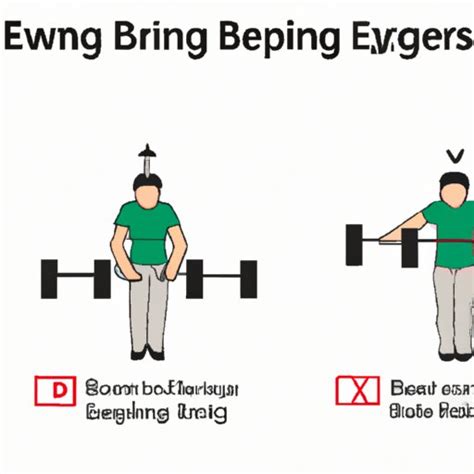
Weight-bearing exercises can be broadly categorized into two main types: high-impact and low-impact activities. High-impact exercises, such as running, jumping, and hiking, involve high-intensity movements that subject the bones to significant stress and impact. These activities are ideal for individuals who are looking to improve bone density and overall physical function, but may not be suitable for those with joint problems or other mobility issues. Low-impact exercises, on the other hand, include activities such as walking, swimming, and cycling, which are easier on the joints and can be modified to suit different fitness levels.
High-Impact Weight-Bearing Exercises
High-impact weight-bearing exercises are ideal for individuals who are looking to improve bone density and overall physical function. These activities include: * Running: a high-intensity activity that involves repetitive impact on the joints, making it an excellent way to improve bone density and cardiovascular fitness. * Jumping: a high-impact activity that involves explosive movements, making it an excellent way to improve power, speed, and agility. * Hiking: a high-impact activity that involves uneven terrain, making it an excellent way to improve balance, coordination, and overall physical function.Low-Impact Weight-Bearing Exercises
Low-impact weight-bearing exercises are ideal for individuals who are looking to improve bone density and overall physical function, without putting excessive stress on the joints. These activities include: * Walking: a low-impact activity that involves minimal stress on the joints, making it an excellent way to improve cardiovascular fitness and overall physical function. * Swimming: a low-impact activity that involves minimal stress on the joints, making it an excellent way to improve cardiovascular fitness and overall physical function. * Cycling: a low-impact activity that involves minimal stress on the joints, making it an excellent way to improve cardiovascular fitness and overall physical function.Benefits of Weight-Bearing Exercise
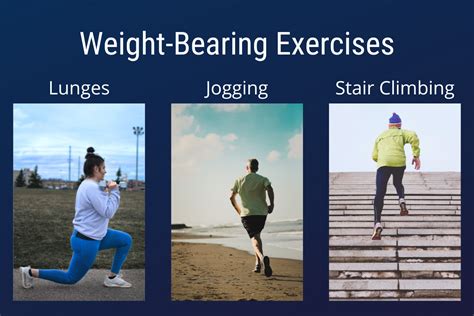
The benefits of weight-bearing exercise are numerous and well-documented. Some of the most significant advantages of incorporating weight-bearing activities into our daily routine include:
- Improved bone density: weight-bearing exercises stimulate the growth of new bone tissue, increasing bone density and reducing the risk of fractures.
- Enhanced physical function: weight-bearing exercises improve muscle mass and strength, enhancing overall physical function and reducing the risk of chronic diseases.
- Improved balance and coordination: weight-bearing exercises improve balance and coordination, reducing the risk of falls and related injuries.
- Improved mental health: weight-bearing exercises reduce symptoms of anxiety and depression, improving mood and overall quality of life.
Improved Bone Density
Improved bone density is one of the most significant benefits of weight-bearing exercise. By subjecting our bones to stress and impact, weight-bearing exercises stimulate the growth of new bone tissue, increasing bone density and reducing the risk of fractures. This is especially critical for older adults, as falls and related injuries can have severe consequences, including hospitalization, disability, and even death.Enhanced Physical Function
Enhanced physical function is another significant benefit of weight-bearing exercise. Weight-bearing exercises improve muscle mass and strength, enhancing overall physical function and reducing the risk of chronic diseases, such as diabetes and heart disease. This is especially critical for individuals who are looking to improve their overall health and well-being, as weight-bearing exercises offer a unique opportunity to challenge ourselves and push beyond our perceived limits.Getting Started with Weight-Bearing Exercise
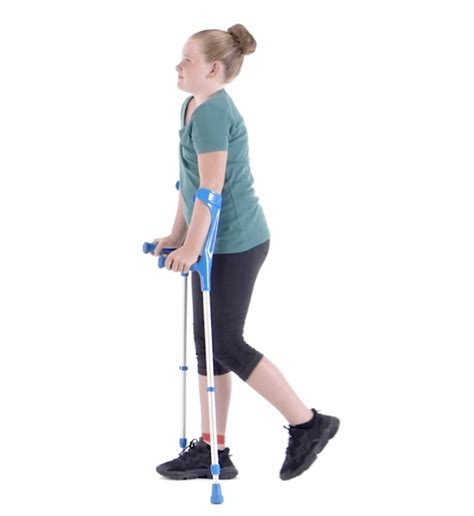
Getting started with weight-bearing exercise is easier than you think. Whether you're a seasoned athlete or a beginner, there are numerous activities to choose from, each with its unique benefits and challenges. Here are some tips to get you started:
- Consult with a healthcare professional: before starting any new exercise program, it's essential to consult with a healthcare professional, especially if you have any underlying medical conditions or concerns.
- Choose an activity you enjoy: weight-bearing exercises should be enjoyable and challenging, so choose an activity that you enjoy and that fits your lifestyle.
- Start slowly: it's essential to start slowly and gradually increase the intensity and duration of your workouts, as this will help prevent injuries and ensure that you stick to your routine.
Choosing the Right Activity
Choosing the right activity is critical when it comes to weight-bearing exercise. With numerous options to choose from, it's essential to select an activity that you enjoy and that fits your lifestyle. Here are some factors to consider: * Fitness level: choose an activity that suits your fitness level, whether you're a beginner or a seasoned athlete. * Interests: choose an activity that you enjoy and that aligns with your interests, whether it's walking, running, or hiking. * Schedule: choose an activity that fits your schedule, whether it's a morning jog or an evening walk.Common Mistakes to Avoid

When it comes to weight-bearing exercise, there are numerous mistakes to avoid. Here are some common pitfalls to watch out for:
- Insufficient warm-up: failing to warm up properly can lead to injuries and reduce the effectiveness of your workout.
- Poor form: using poor form can lead to injuries and reduce the effectiveness of your workout.
- Overdoing it: overdoing it can lead to injuries and burnout, so it's essential to start slowly and gradually increase the intensity and duration of your workouts.
Insufficient Warm-Up
Insufficient warm-up is a common mistake to avoid when it comes to weight-bearing exercise. Failing to warm up properly can lead to injuries and reduce the effectiveness of your workout. Here are some tips to ensure that you warm up properly: * Start with light cardio: start with light cardio, such as jogging or jumping jacks, to get your heart rate up and loosen your muscles. * Stretching: incorporate stretching into your warm-up routine, focusing on the major muscle groups, such as your legs, hips, and back.Conclusion and Next Steps

In conclusion, weight-bearing exercise is a crucial component of a healthy lifestyle, offering numerous benefits, including improved bone density, enhanced physical function, and improved mental health. By incorporating weight-bearing activities into our daily routine, we can reduce the risk of chronic diseases, improve our overall health and well-being, and enhance our quality of life. Whether you're a seasoned athlete or a beginner, there are numerous activities to choose from, each with its unique benefits and challenges. So why not get started today and take the first step towards a healthier, happier you?
We invite you to share your thoughts and experiences with weight-bearing exercise in the comments section below. Have you incorporated weight-bearing activities into your daily routine? What benefits have you experienced? What challenges have you faced? Share your story and help inspire others to take control of their health and well-being.
What is weight-bearing exercise?
+Weight-bearing exercise refers to any activity that involves bearing weight on your bones, such as walking, running, or hiking.
What are the benefits of weight-bearing exercise?
+The benefits of weight-bearing exercise include improved bone density, enhanced physical function, and improved mental health.
How do I get started with weight-bearing exercise?
+To get started with weight-bearing exercise, consult with a healthcare professional, choose an activity you enjoy, and start slowly.
